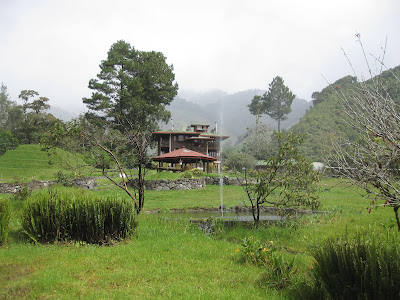Filipe, a 36 year old member of my community, died recently. He was the younger brother and uncle to many of my close friends here. He had been sick for at least a few months. In the last month he was living in my neighbors house as his condition worsened.
What condition? We'll never know. The last time he went to the hospital was a week before he died and they simply sent him home. When I arrived to my house from being away at a conference, some children informed me that he had passed away. Here is where the strong traditions start.
First, vigil in the house. All day, all night, people come from all over to be with the family and drink cacao (think bitter, unsweetened chocolate beverage). I went one day, drank cacao, and sat by family members while they cried.
The men of the entire community are preparing for the burial at this time. Building a box for the body, preparing the grave. There is a cemetery on the edge of town where everyone buries their dead.
Filipe, now referred to as "el disfunto" or "the deceased" instead of by name, died on Friday and by Monday it is time for the burial. The body in the box draped with black cloth is taken from the house and walked to the cemetery, with a procession of community members behind it.
At the grave, the local pastor gave a brief obituary and the group sang hymns. Then, the top came off the coffin. This is the point, the last time to see the physical body of your son, brother, uncle. They cried and cried
and cried. I cried watching them cry. The deceased was buried and his earthly belonging laid on the fresh dirt above.
I thought it was over, the main part of the grieving process fulfilled and with the deceased buried, the community would move on to a new chapter in life. However, the Friday after the Monday of the funeral, everyone related to the deceased packed up and left town. They went about 30 minutes down the road to stay with other family. Too painful to be in the house where he died, they left to try to move on without being constantly reminded of the deceased. Town got a lot quieter and I was personally disappointed by the temporary loss of so many of my close neighbors. Now, they are starting to trickle back to town as each family is ready.
Experiencing this death was unlike any other I've dealt with. Death here is so unavoidable. You have to touch every part of it. No hospitals, morticians, nurses, no funeral homes. You make the coffin, dig the grave. There is so much tradition, too. Everyone knows their part.
This probably won't be the first death or funeral I experience here and this one has given me a new perspective on death and grieving, examples of cultural differences and similarities of human nature.













































